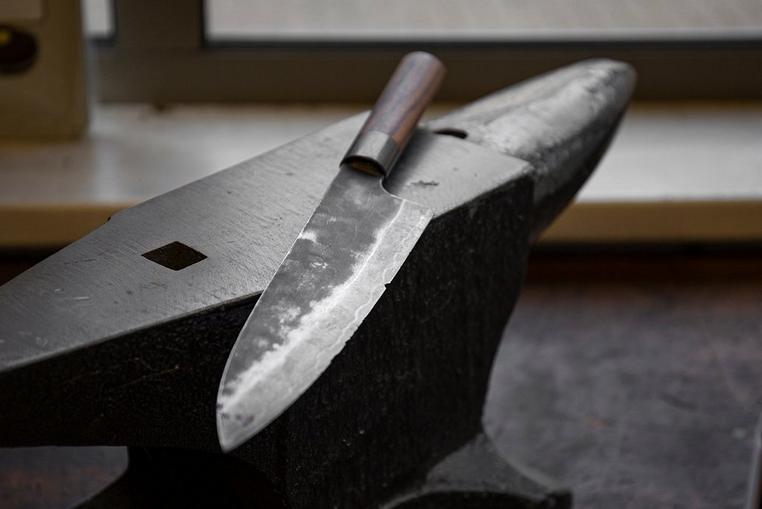Coarse sharpening stones
Coarse and extra coarse sharpening stones are an important part of the sharpening process. A common mistake people make is to start sharpening with a stone with a too fine grain size. And yes, this happens faster than you'd think. By using too fine stones, it takes a lot of time to get the knife sharp again. Not very efficient. When you need to use a coarse sharpening stone depends, of course, on how you use your knives and the quality of your knives. A blade of a harder type of steel will remain sharp for a longer period of time than blades made from less hard types of steel.
Common problems
Because fine sharpening stones remove much less material from the blade than coarse sharpening stones, a number of problems may arise when you use fine sharpening stones on knives that are too blunt.
- Time-consuming: because fine sharpening stones remove less material from the blade, you will spend a really long time getting dull knives razor-sharp again. Therefore, always use a grain size that matches the bluntness of the blade.
- Uneven edge: the longer you spend sharpening, the harder it becomes to maintain a constant sharpening angle. You're more likely to create an uneven edge, which is bad for the cutting capabilities of your knife.
- Chipping: with a too fine grain size, it is almost impossible to remove a small chip from the edge. You're sharpening the edge, but not restoring the 'chip', so you won't get the consistent cutting quality that you want.
The degree of bluntness determines which sharpening stone you should use first. The extent of your knife's bluntness, determines which grit size you should start with when you're sharpening. The aforementioned problems can easily be solved by using a coarse sharpening stone. Would you like more tips about sharpening in general? Check out our large collection of sharpening topics and become a sharpening master, just like our very own Leon!
What is the right sharpening angle?
Every knife has its own thickness. An average chef's knife is generally about 4 cm high, a peeling knife about 1 cm. Determining the right sharpening angle can be difficult. This video explains how to find the right angle at which your knife should be sharpened:
Which coarse sharpening stone do I need?
We offer many different sharpening stones and combi-stones. These sharpening stones are mostly used to remove deep imperfections of the blade. Among our coarse grinding stones there are several options to choose from; not all coarse grinding sharpening stones are the same.
We have coarse diamond-coated sharpening stones from DMT, like this DMT DiaSharp Benchstone Coarse. Diamond sharpening stones are always a good choice, because they take material off very quickly thanks to the hard diamond particles.
In addition, we also have 'standard' sharpening stones with which you can restore a blunt or damaged edge just fine. Other popular options among coarse sharpening stones include the 220 grit Skerper Professional stone and the 120 grit Shapton Pro Stone, which sharpens your blunt knives with ease. Using these stones will give you results in no time at all.
It is important to note that there are differences between stone types from different manufacturers. For example, a 220 grit ceramic sharpening stone with will sharpen differently than a stone made of a softer material in the same grain size. For example, there are important differences between the two well-known Japanese brands Naniwa and Shapton.
If you are not sure which stone is suitable for your knife, we will be happy to give you individual advice.
Questions?
Are some things still unclear? Don't hesitate to send us an e-mail or call us. Or contact us on Facebook or Twitter. We'll do our best to help you.







